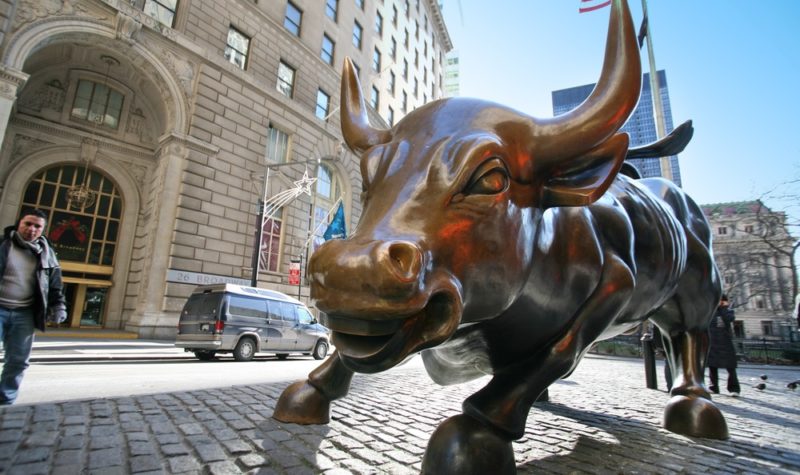Why I’m warming to Polar Capital

Polar Capital is a company always seeking growth, value and relative safety but still enjoying net inflows of fresh funds, writes Mark Watson-Mitchell.
From a standing start in 2001, this investment management company has built up both steadily and impressively. Furthermore, to my knowledge, it is not continually going out and seeking self-glorying publicity about its achievements – and that is a style of which I most certainly approve.
Today Polar Capital Holdings (LON:POLR) is a specialist active investment group with some 12 autonomous research-driven fund investment teams each handling specific portfolios. The group now has around 140 employees, of which 55 are investment professionals. Its head office is in London’s West End, while other locations include Jersey, Tokyo, Edinburgh, Connecticut, Shanghai and Paris.
| Master Investor Magazine
Never miss an issue of Master Investor Magazine – sign-up now for free! |
Robust institutional controls in its risk, operational, relationship and compliance management are almost as impressive as its entrepreneurial edge, with its founders, directors and employees owning 32% of the issued share capital.
And by the way, it’s very important assets under management (AuM) figure was last declared at £14.7bn. Its funds are diversified by geographical, sectoral and asset class specialisation, while its investors are both institutional and professional.
Its specialist teams take in financials, technology and healthcare. The regional teams cover emerging markets, European income, Asia, UK value, North America and Japan. The alternative investment teams are involved in convertibles, UK absolute returns and European long/short.
The group’s objective is to deliver strong and sustainable earnings and dividend growth by continually seeking and gaining excellent investment performance. Witnessing what has been happening at other fund management companies of late, it is well worth noting that it is out to enhance its funds under management while protecting its performance. Hence my comment about headline grabbing. This company apparently just gets on and does the job.
Although seeking out long-term earnings and dividend growth, the company oversight team continually monitors its liquidity and its ability to liquidate any of its fund portfolios. As an example, its managers reckon that over 50% of its least liquid fund, the Polar Capital Fund, can be liquidated within 15 days. Furthermore, it reported that the eight most illiquid holdings in four of its funds made up less than a mere 0.2% of the group’s AuM.
But looking deeper into the funds shows that their value and income style profile is 44% of AuM, while growth represents, understandably, some 50% of AuM. The balance of the funds takes in the absolute return and alternative asset classes.
Considering its low profile as an asset management group, I have to say that I do always note how many times Polar Capital shows up in the equity holders of so many of my profile constituents – like me they seem to go for growth with value and lower market price-to-earnings ratios.
The company’s current half-year ends on 30 September and the next AuM update will be within a month’s time. It was interesting to see that, at a very challenging time when other fund management groups were suffering net outflows, Polar Capital actually experienced a £150m net inflow. Without being brash, it does appear that the group remains confident in its active fundamental fund strategies and its ability to deliver above average returns for its clients.
Its shareholders, including the 32% held by its own ‘insiders’, and the 7% owned by long-term holders Caledonia Investments, have a lot of upside potential in their shares. Other equity owners include Hargreave Hale (9.74%), Harwood Capital (7.45%), Unicorn (4.36%), Artemis (4.29%), Standard Life (4.26%) and BlackRock (3.77%).
The group’s results over the last three years reflect its growth in funds combined with the market environment. In 2017, revenue was £73.8m and pre-tax profits were £20.4m. In 2018, £134m of revenue saw profits of £41.3m. For the year to end-March 2019, £178m of revenue produced a boosted £64.1m pre-tax.
However, for the current year, brokers estimates suggest that tougher times will see £149m of revenue generate just £52.1m pre-tax, worth 45.6p per share in earnings and 33.6p in dividends. Next year a slight recovery to £163m could see a £58.3m profit, giving 50.7p in earnings and 36.1p per share in dividend. Further out the end-March 2022 year could see £182m of revenue, £67.4m of profit, 58.2p of earnings and 40.6p of dividend per share.
With its shares currently trading at around the 530p level, the group is capitalised at only £475m. Trading on just 11.6 times current year and 10.4 times prospective earnings these shares are undervalued, especially with so much corporate play going on in the fund management sector.
Brokers Shore Capital put out a ‘fair value’ price on Polar Capital at 745p. My target price is, I feel, an easily achievable 675p by the end of next year.

Comments (0)